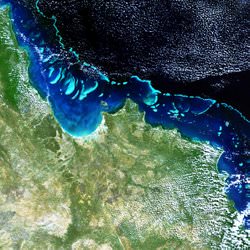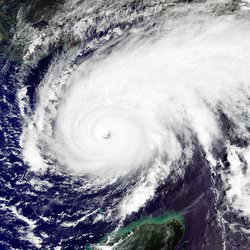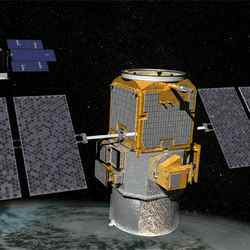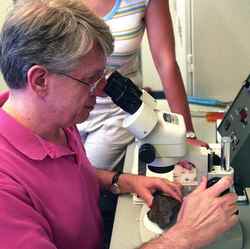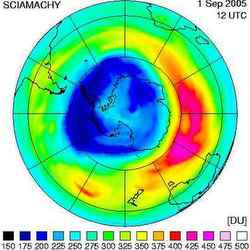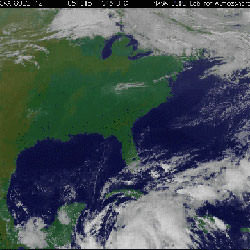
Satellite view of Hurricane Wilma. Image credit: NASA/NOAA. Click to enlarge.
In the early morning hours of Wednesday, October 19 in the warm Caribbean waters, Hurricane Wilma strengthened from a Category 2 hurricane to the most intense Hurricane 5 hurricane on record.
Hurricanes are measured by factors such as atmospheric pressure, winds and storm surge. Wilma’s atmospheric pressure at 8 a.m. EDT measured 882 millibars. The previous record was 888 millibars set in 1988 by Hurricane Gilbert that moved through the Gulf of Mexico.
At 8 a.m. Wednesday, October 19, Wilma was packing maximum sustained winds of 175 mph (280 km/hr) with higher gusts. Wilma’s center was located near latitude 17.2 north and longitude 82.8 west or about 340 miles (550 km) southeast of Cozumel, Mexico. Wilma is moving toward the west-northwest near 8 mph (13 km/hr). A turn toward the northwest is expected during the next 24 hours.
According to the National Hurricane Center, Wilma is a potentially catastrophic Category 5 hurricane on the Saffir-Simpson scale. Fluctuations in intensity are common in hurricanes this intense and are likely during the next 24 hours.
Wilma is a smaller storm than Katrina. Wilma’s hurricane force winds extend outward to 15 miles (30 km) from the center and tropical storm force winds extend outward up to 160 miles (260 km).
Based on data from dropsondes, instruments that are dropped into the storm from Hurricane Hunter planes that fly over it, and flight-level data from an Air Force plane, Wilma’s minimum central pressure is estimated to be 882 millibars (26.05 inches). This is the lowest pressure on record for a hurricane in the Atlantic basin.
Rainfall by Wilma is expected to be high. Wilma is expected to produce storm total accumulations of 10 to 15 inches with local amounts near 25 inches in mountainous terrain across Cuba through Friday. Additional rainfall accumulations of 5 to 10 inches, with local amounts of 15 inches, are possible across the Cayman Islands, Swan Island and Jamaica through Thursday.
From Honduras northward to the Yucatan peninsula of Mexico through Thursday, storm total accumulations of 4 to 6 inches, with isolated amounts of 8 to 12 inches are possible.
Watches and warnings have been posted throughout the region. A hurricane watch is in effect for the east coast of the Yucatan Peninsula from Cabo Catoche to Punta Gruesa. A hurricane watch is also in effect for Cuba in the provinces of Matanzas westward through Pinar del Rio and for the Isle of Youth. A hurricane watch means that hurricane conditions are possible within the watch area, generally within 36 hours.
Tropical storm warnings are up for Honduras from the Honduras/Nicaragua border westward to Cabo Camaron. A tropical storm warning and a hurricane watch remain in effect for the Cayman Islands.
Current forecast models project Wilma making landfall in southwest Florida on Saturday, Oct. 22 or Sunday, Oct. 23. All residents in the Florida Keys and the Florida peninsula should closely monitor the progress of extremely dangerous Hurricane Wilma. Story credit: Rob Gutro, NASA
Original Source: NASA News Release

